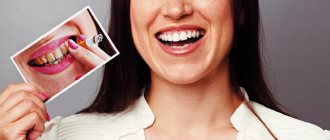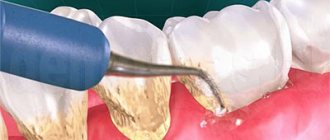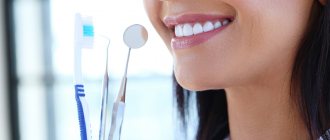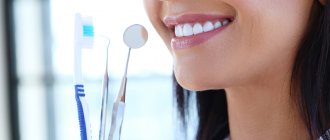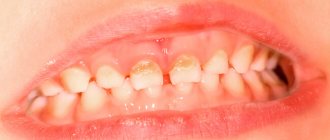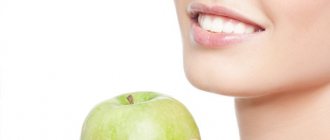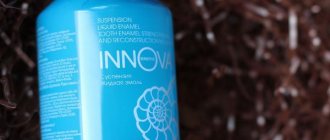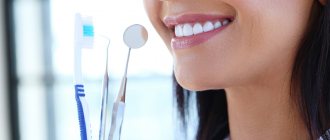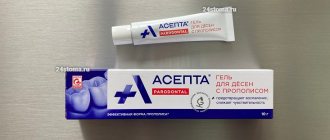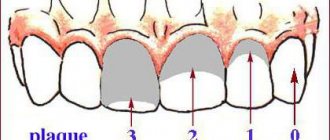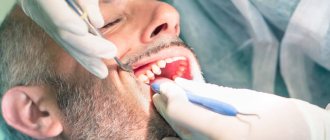Why do some people shine with a white-toothed smile, while others constantly visit the dentist? After all, everyone has been brushing their teeth for many years. And the secret is simple - just follow certain rules of oral care. To maintain the health and beauty of your teeth, you need to regularly brush them with a toothbrush and toothpaste, use floss and rinses. If you wear braces, the orthodontist advises you to get a special v-shaped orthodontic brush, a brush, superfloss, irrigator, and a monotuft brush for hard-to-reach places. And also for the entire period of correcting the bite with braces, pay increased attention to dental hygiene and regularly carry out professional hygiene.
Orthodontist-dentist Nikolaeva Nadezhda Nikolaevna
Why do you need to brush your teeth?
Oral hygiene is not only a matter of aesthetics. It is due to medical reasons. A plaque constantly forms on the enamel, consisting of: • food particles; • saliva; • waste products of microorganisms inhabiting the oral cavity.
The process of plaque deposition does not depend on whether a person ate in the interval between brushings. If it is not removed, over time it turns to stone. Contamination not only creates a cosmetic defect. Deposits contribute to the violation of the integrity of the enamel. Pathogenic bacteria penetrate into the resulting cracks and actively multiply under conditions of poor hygiene. This is how caries begins with all the known consequences. These microorganisms also attack the gums. In people who neglect to brush their teeth, gingivitis becomes chronic. If the inflammation is not treated, complications in the form of periodontitis and periodontal disease are possible. As a result, the root no longer holds in the socket and the tooth falls out.
How to care for braces?
In order to properly brush your teeth with braces, you need to follow these tips:
- For cleaning you will need 2 brushes, one of which should be tuft-shaped and the other should have a V-shape. The first is intended to clean the front teeth, the second – the back teeth.
- It is necessary to use fluoride-containing paste.
- Brushing your teeth must be done after every meal.
For clarity, you can find on the Internet and watch a video on how to properly brush your teeth if you have braces in your mouth.
How to brush your teeth correctly?
It is a mistaken idea that everyone can do this. There are a number of rules, many of which are either unknown or ignored. However, only compliance with them guarantees effective cleaning of the enamel: • Carrying out hygiene procedures not only at home, but also at the dentist. • Rational selection of brushes and paste. • Using the optimal teeth brushing method. • Using dental floss, brushes and mouthwash. • Taking into account the condition of the gums, the presence of braces and dentures. • Compliance with the rules for storing, cleaning and replacing brushes.
Tablets for determining plaque will help you understand whether you have achieved your goal. They demonstrate whether unwanted deposits are present on the enamel. They also suggest which areas are not being worked through carefully enough.
Your feedback
simpladent.com I chose the clinic based on reviews from friends.
And the doctor according to the principle “please, in the very near future.” I had experience with unsuccessful prosthetics, so, of course, I was in a state of great excitement. Then, when Sidorov D.A., Malinovsky I.Yu. started working with me. and Stotik V.V., I calmed down. Many kind words can be said about each of them. Now I have such natural teeth, which, by the way, chew perfectly and which I began to feel like my own. Thank you, Masters! Marina Borisovna |
10/13/2019 Leave a review Other reviews
Choosing a toothbrush
To completely clean the enamel from plaque, you need to choose a suitable brush. The easiest way to do this is by material. There are two options here - natural and synthetic. It is better to give preference to the latter, since they are quite elastic, and the tips of the hairs are usually rounded, which is safer for the gums. Bacteria multiply faster on natural materials.
In terms of the stiffness of the bristles, toothbrushes are: • Soft. They are best taken for children, adolescents and people suffering from gingivitis. • Average. A universal option for people without dental problems. • Tough. They help fight hard plaque and can be used only when indicated.
The configuration of the bristles should be discussed with your dentist. It will tell you where more sediment collects. For example, if you need to better work on the necks of teeth, bristles collected in bunches can handle this.
Pasta selection
Pastes are hygienic, preventive and therapeutic. The first ones solve the only problem - clean the enamel. The latter, due to the antiseptic component, help prevent the development of gingivitis and caries. Still others are prescribed by dentists for therapeutic purposes; it is better not to use them on your own.
Toothpastes are also distinguished according to the results of use: • whitening - slightly lighten the enamel, but you should not expect drastic changes from them; • strengthening – contain fluoride, good for enamel health; • desensitizing - reduce sensitivity; • anti-inflammatory - help with gingivitis.
Abrasiveness characterizes the degree of impact on plaque. The average value of this indicator is from 50 to 80. Higher values can be taken occasionally to lighten teeth. Lower abrasiveness is indicated for sensitive enamel and gums.
Proper brushing of teeth: sequence of movements
For hygiene purposes, you need to accustom yourself to a certain sequence of movements.
After squeezing the paste onto the brush, you must: • apply it to the teeth at an angle of 45 or 90 degrees; • pass each one 3-4 times in the direction from the gums to the cutting edge; • treat chewing surfaces with circular movements; • Allow at least 30 seconds of brushing for each half of the jaw. Depending on the location of the brush and the direction of movement, there are three methods of brushing teeth. The most famous (90 degree brush, top to bottom movements) is the Leonard method.
The Bass method involves choosing an angle of 45 degrees and making vibrating movements. It is good because the bristles penetrate into the interdental spaces and partially work out the contact surfaces. With the Fones method, an angle of 90 degrees is taken and the brush moves in a circle. This further massages the gums, which improves blood circulation and protects against inflammatory processes.
Additional oral cleansing
Oral hygiene is not limited to two rows of teeth. For complete cleansing it is necessary to treat: • Interdental spaces. Dental floss or a brush will help remove plaque. • Language. To do this, use the relief surface of the back of the toothbrush or a special scraper. • Gums. They are partly cleaned with a brush: at an angle of 45 degrees, the bristles approach the edge and capture deposits. Rinse aid also helps. • Cheeks. You can go over them with the back of the brush, but they require more rinsing.
You need to start by removing the largest food debris. To do this, just rinse your mouth with water. Then comes the turn of fragments stuck in the interdental spaces - this is where floss comes to the rescue. Now you can take up the brush with the paste. Rinse aid is used last - to create a protective layer.
Additional recommendations
When brushing, you should not put too much pressure on the brush, especially if you use a brush with medium or maximum hardness bristles - this can lead to damage to the mucous membranes and enamel, and even to the development of a serious pathology - wedge-shaped tooth defect. You should not use too much toothpaste.
To check the quality of cleaning, run your tongue over your teeth: they should be perfectly smooth, without the slightest roughness. You can also purchase staining tablets at the pharmacy that will help identify poorly cleaned areas of tooth enamel.
In addition, it is necessary to pay sufficient attention to the choice of toothbrush and toothpaste. These are two of the best tools for cleaning your teeth and mouth from food debris and harmful bacteria.
It must be remembered that replacing a toothbrush must occur in a timely manner - at least once every 3 months, otherwise a worn-out product with bristles damaged over time will not cope with its task effectively enough.
Don't use chewing gum as a substitute for brushing. Despite the proven benefits of this process, chewing gum cannot completely replace mechanical cleansing, in addition, it is significantly less effective in combating bacteria.
If you use a shared bathroom, use a special case, not a cup holder, to store brushes, since when you flush the toilet, bacteria spread within a radius of 2 meters and can land on the brush.
We hope that our recommendations for brushing your teeth will be useful to you and that your teeth will always delight you with whiteness. And so that their cleaning is more effective. Try Asepta PLUS Remineralization professional toothpaste. This unique product restores tooth enamel, reduces the sensitivity of teeth and gums and accelerates the regeneration of the oral mucosa.
How to brush your teeth with gingivitis?
Inflammation of soft tissues is not a reason to neglect hygiene. On the contrary, the more often cleansing is done, the less chance bacteria have to support the inflammatory process.
However, you need to take precautions: • choose brushes with soft bristles (preferably rounded); • choose a paste with low abrasiveness and containing medicinal herbs; • give preference to the Bass method, and abstain from the Fones method until remission; • move your hand more carefully to avoid painful sensations.
Cleaning time should not be shortened, even if the procedure causes discomfort. Sometimes dentists even recommend increasing it. Inflammation of the gums is accompanied by the formation of pockets. Where their edges lag behind, stone grows with particular intensity. This place deserves more careful study.
How to clean dental structures?
Dental structures in the mouth make adjustments to the cleaning process: • Crowns. More attention should be paid to the area where the gums come into contact with the prosthesis. • Bridges. A round mono-tuft brush is more suitable for them. • Veneers. The teeth where they are installed cannot be treated with floss. The ban does not apply to other methods. • Braces. The space under the arch and the area adjacent to the enamel is cleaned with brushes.
In all of the above cases, it is necessary to use an irrigator. Conventional cleaning devices are not able to penetrate all the places where plaque accumulates. There are no barriers for water. Under the pressure set by the device, it knocks out stuck food fragments, preventing them from decomposing or turning into stone.
How do plaque tablets work?
We usually contact a dentist to assess the quality of oral hygiene. It identifies areas that are not cleaned effectively and makes recommendations for replacing the paste or brush. But in between visits to the clinic, you can cope without the help of a doctor.
Special tablets, developed by the Swiss company CURADEN, will help with this. They are part of the CURAPROX range of dental care products. Determination of plaque occurs as follows: • the tablet is diluted in water; • after brushing, a person rinses his mouth with this solution, distributing it over his teeth; • deposits are stained, clean enamel remains intact.
The tablets also help distinguish soft plaque from tartar. The first one becomes pink, the second one becomes dark blue. This way you can understand whether it’s time to go for ultrasonic cleaning.
History of the irrigator
This invention can be considered relatively new. It was first introduced about 60 years ago - in the early 1960s. The development of the instrument was carried out by an experienced dentist from the USA in a small town in the west of the country. He was also an engineer, so he had the opportunity to combine his knowledge in both areas and apply it in practice. Since then, the device has been tested many times, experiments and various studies have been carried out on it, which have proven the effectiveness and positive effect of the Waterpick teeth washing apparatus.
After some time, irrigators for washing teeth began to be produced not only in America, but also in other countries, including Russia. The leader in this area is the American manufacturer Waterpik, which boasts not only a wide range of models with various functions, but also a long warranty, quality materials, high build quality and durability. The company began collecting dental appliances back in the last century and currently offers a wide range of models.
Consequences of not brushing your teeth properly
Proper and timely cleaning of dental plaque is protection against oral diseases.
If you neglect it, the consequences will only increase: • Tartar forms. It gives off an unpleasant odor. If you do not carry out ultrasonic cleaning, it will become a favorite place for bacteria. • Bacteria will destroy the enamel. The abundance of pathogenic microorganisms quickly leads to caries. • Bacteria will cause your gums to become inflamed. Soft tissues are no less sensitive to them than hard ones. And this means bleeding, swelling and an unpleasant odor.
Possible complications are also worth mentioning. Caries develops into pulpitis, which requires removal of the nerve. This deprives the tooth of nutrition, as a result of which it sooner or later collapses. Progressive gingivitis is fraught with periodontitis and periodontal disease. Lack of oral hygiene leads to tooth loss. Restoring them is more expensive than the cost of a brush, paste and professional cleaning. Therefore, it is better to remember these simple rules and follow them.
Online consultation with a doctor
If you are concerned about the condition of your teeth, changes in enamel color, local or over the entire surface. Do you want to learn about ways to remove plaque and whiten your teeth? It is best to undergo an examination and consultation with a dentist. Because exciting symptoms may not just be a sign of plaque, but the beginning of the process of formation of tartar, diseases of a deeper nature. If you do not act on time, complications may arise: the formation of gum pockets that cause discomfort and require attention, gingivitis, periodontitis, inflammation of soft and hard tissues. Inaction will lead to the necessary more expensive treatment and work to save the tooth. Otherwise:
- depulpation, restoration;
- implantation;
- prosthetics;
- treatment of adentia.
